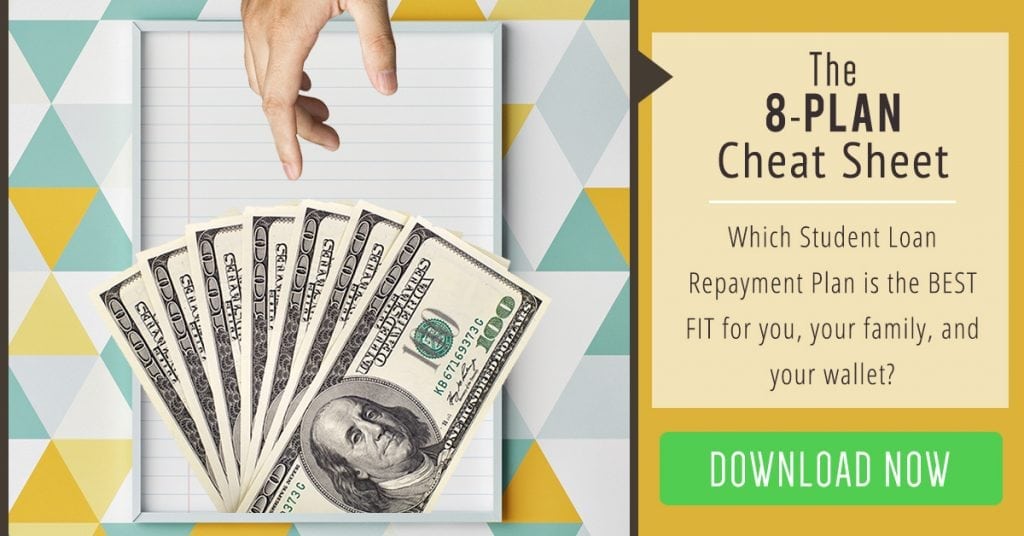The Graduated Repayment plan is a repayment plan for student loan borrowers to repay loans made under the Federal Direct Loan Program and the Federal Family Education Loan Program.
This plan is structured around providing borrowers with a low initial monthly payment at the beginning of the repayment period. After making the initial low payment for two years, the monthly payment will continue to increase in size every two years.
Towards the end of a Graduated Repayment Plan, the monthly is usually higher than would it be under the Standard Repayment Plan.
Student loan borrowers entering the Graduated Repayment Plan will have access to the following benefits:
- A low initial payment amount that will increase every two years
- A repayment plan that ends after 10 years of payments (unless consolidated)
What types of loans are eligible for the Graduated Repayment Plan
Student loan borrowers that have loans made under the Direct Loan Program or the FFEL Program can pay their loans under a Graduated Repayment Plan.
Here are the loans that are eligible for the Graduated Repayment Plan:
- Direct Subsidized Loans
- Direct Unsubsidized Loans
- Direct PLUS Loans
- Direct Consolidation Loans
- Subsidized Federal Stafford Loans
- Unsubsidized Federal Stafford Loans
- FFEL PLUS Loans
- FFEL Consolidation Loans
Do you have Private Student Loans?
Private Student Loans are not eligible for the Standard Repayment Plan or any repayment plan offered through the Department of Education. Please contact your servicer to see what repayment options are available to you.
Who is the graduated repayment plan for?
A student loan borrower can benefit from the graduated repayment plan if they meet the criteria below:
- Borrowers that are expecting to gradually make more money after starting an entry-level job
- Borrowers that would like to pay off their student loans in 10 years
Who is the Graduated Repayment Plan not for?
The Graduated Repayment Plan is not a one size fit all type of plan for student loan borrowers.
This repayment plan gives the loan borrower a way to pay off their student loans in 10 years. The lower payments made in the beginning of the plan only benefit the borrower if they can make the larger monthly payments at the end of the plan
Borrowers that can’t get a higher income after college will struggle to make the increased payment amount towards the end of the Graduated Repayment Plan.
Borrowers that can’t make the monthly payments will accrue more debt on interest and late fees. This makes it nearly impossible to see the principle balance of the loan go down.
Here are some reasons why a student loan borrower might want to choose a different repayment plan:
- Student loan borrowers that struggle to make their full student loan payment each month after paying other bills
- Anyone with a low income compared to their student loan debt
- Borrowers that have multiple dependents who receive more than half of their support from the borrower
- Loan borrowers that are considered to have a partial financial hardship
- Student loan borrowers that are looking to receive Student Loan Forgiveness
(Did You Know? There’s plenty of other repayment plans that you could benefit from if Graduated Repayment Plan isn’t the one for you. This 8-Plan Cheat Sheet breaks each of the best ones down for you, so you can easily select the one that best fits you and your lifestyle. Learn more and download it for free, here.)
Am I eligible for the Graduated Repayment Plan?
Anyone that has William D. Ford Federal Direct Loans and Federal Family Educational Loans are eligible for the Graduated Repayment Plan
The real question is will you still be able to make your monthly payment towards the end of the repayment period? At that stage, your monthly payment can be larger than a Standard Repayment Plan Payment.
Your first payment in the Graduated Plan might start off at $150, but your last monthly payment can end up being $450. It can be even larger depending on the amount of loan debt.
Do you think you would still be able to live comfortably with monthly payment of that size?
If the answer is yes, then this might be a good option for you.
If the answer is no, don’t worry. There are seven other repayment plans that might work better for you (including 4 income-driven repayment plans).
How long will I be in the Graduated Repayment Plan?
The repayment period for the Graduated Repayment Plan is 10 years (10 – 30 years if you complete a Direct Loan Consolidation). Depending on your financial situation, making all 120 payments on time is the easiest and quickest way to repay your student loans.
If you start making payments in the Graduated Repayment Plan and decide it’s not the right plan for you (or if you experience a financial crisis), you can choose to take yourself out of the plan.
Depending on the loan amount (or if it’s a Direct Consolidation Loan), the monthly payment for the Graduated Repayment Plan can make a significant impact on your monthly expenses.
It’s common for many student loan borrowers to enter an income-driven repayment plan after they realize the Graduated Repayment Plan is not an affordable method to pay off their student loan debt.
Is the payment the same each month?
The payment you start off with in a Graduated Repayment plan will last two years. The monthly payment amount will continue to increase in two-year intervals.
Your monthly payment has a cap and it will never be three times greater than any other payment. The payment will never be smaller than the amount of interest you gain on the loan each month.
What is an income driven repayment plan?
An income-driven repayment plan is a repayment plan that can help student loan borrowers get a more affordable monthly loan payment based on income and the size of their family.
These repayment plans originated from the passing of the Health Care and Education Reconciliation Act of 2010.
While there are four income driven repayment plans, not all income driven plans are built for everyone. Depending on your unique financial situation, there might only be one repayment plan that makes sense for you.
Sometimes borrowers qualify for multiple income driven repayment plans and can’t decide which one makes the most sense.
Need help with that deciding? Give us a call at 813.775.2028 or simply download this 8-Plan Cheat Sheet to help you decide which plan may be the best fit. It’s totally free. Just tell us where to send it 🙂
What factors come into play with the Graduated Repayment Plan?
Your eligibility for the program is calculated based on the following factors:
Your monthly payment for the Standard Repayment Plan is calculated based on the following factors:
- Amount Of Student Loan Debt – your monthly payment is based off the amount of money you need to pay each month to pay off your debt in 10 years
- Type of loans – loans from the Federal Direct Loan Program and the Federal Family Education Loan Program (*Private Student Loans are not eligible)
What other options are there for me to repay my student loans?
The Department of Education offers a variety of student loan repayment programs to assist student loan borrowers with different financial situations.
There are four income driven repayment plans:
- Income Based Repayment Plan
- Income-Contingent Repayment Plan
- Pay As You Earn Repayment Plan
- Pay As Your Earn Revised Repayment Plan
There are four standard payment plans:
- Standard Repayment Plan
- Graduated Repayment Plan
- Extended Repayment Plan
- Income-Sensitive Repayment Plan



Leave a Reply